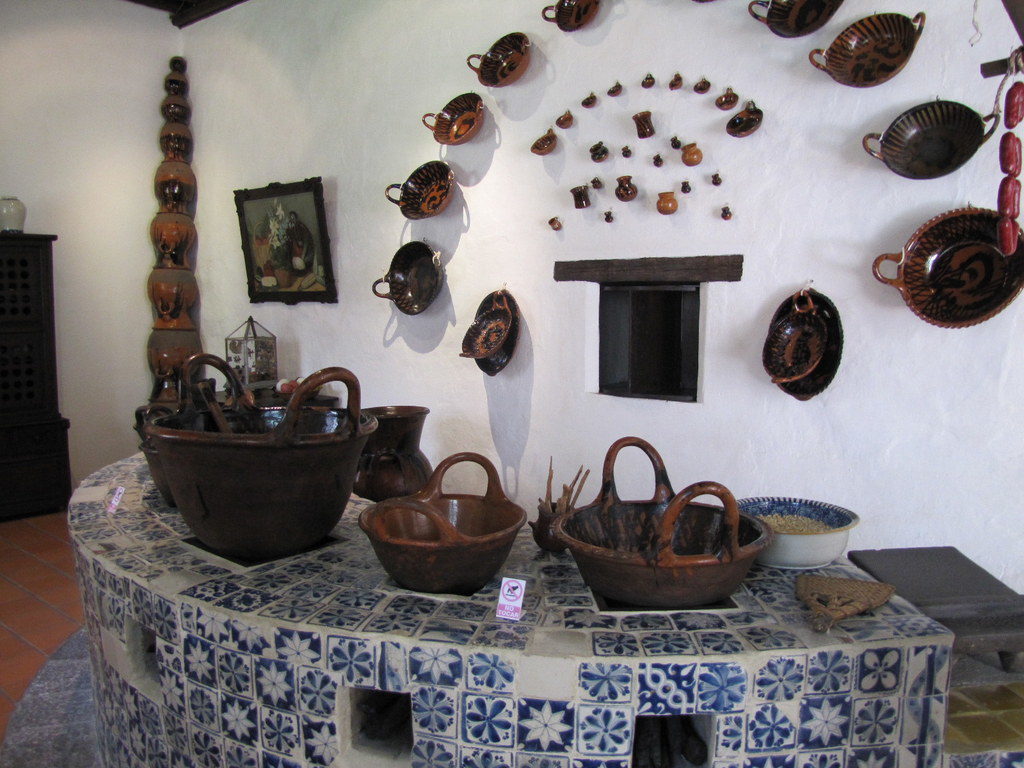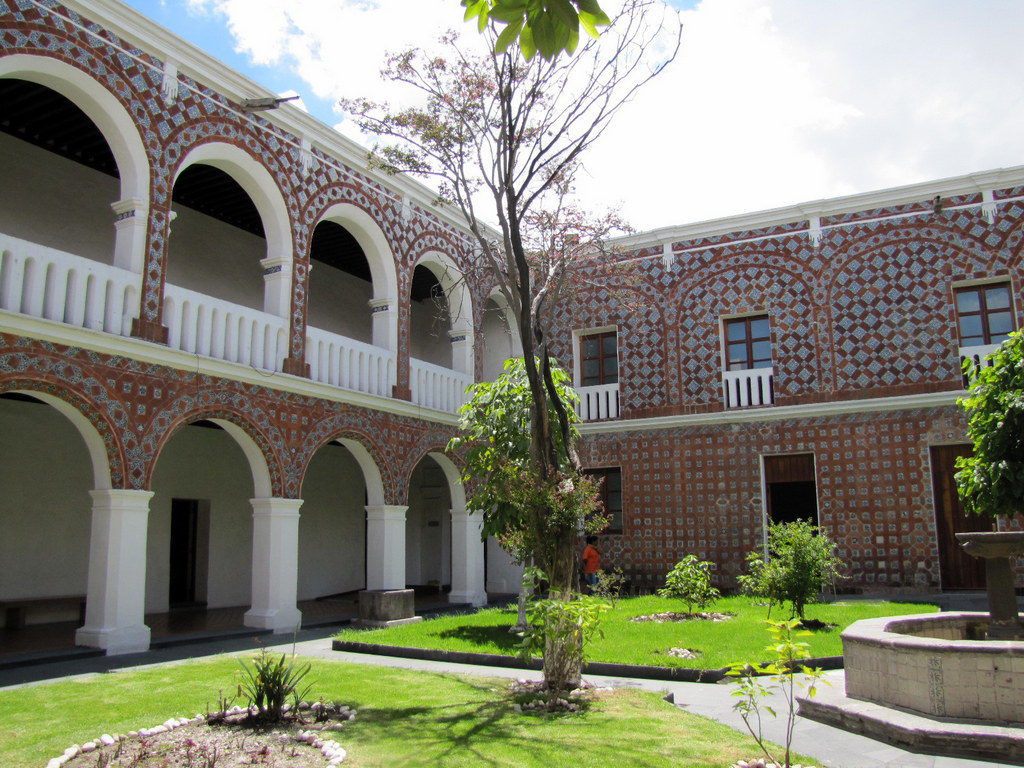Hidden behind a private home, a convent with a small community of nuns lived in hiding for nearly 70 years. The family who lived in the home fronting the convent knew of their existence; and surely the congregation of the adjoining Santa Monica church did as well, since the nuns continued to sing from the choir loft during mass from behind a panel which hid them from view, as they had before convents were outlawed in Mexico. Their existence remained a secret from the government until the 1930s when they were discovered and turned out of their convent, which was then converted into a museum of religious art.
The front of this building is unassuming, blending in with the other homes and businesses located on a bustling street in Puebla’s historical center. The building dates to 1606, when it was originally used as a home for widows and abandoned women. In 1688 it was converted into a convent for nuns of the Augustinian Recollects order. The convent housed women of Spanish descent who gave up public life to live a cloistered existence within the convent. The Augustinian Recollects is one of the stricter religious orders. Besides the vows of poverty, chastity and obedience, these nuns lived a very austere life, sleeping on narrow wooden cots and often subjecting themselves to corporal mortification.
Although the nuns lived an ascetic lifestyle, one aspect of their lives in which there was great experimentation was in the kitchen. Their kitchen served as a laboratory where new and different combinations of food were experimented with and original dishes were created. The devout sisters combined pre-Hispanic ingredients and techniques with ones imported from Europe to produce some of Puebla’s most iconic dishes, such as Chiles en Nogada. A large semi-circular wood-fired stove decorated with Talavera tiles dominates the convent’s kitchen. A collection of clay pots of varying shapes and sizes, and other cooking implements hang on the walls around the stove. The adjoining pantry offers a look at the variety of ingredients the nuns used.

In the mid-1800s several laws were brought into effect which greatly diminished the power of the church, which had theretofore controlled much of the country’s wealth. Before these measures were brought into effect, the church rivaled the government in power, being responsible not only for the spiritual life of the people but also education, caring for the sick and indigent, as well as registering marriages, births, and deaths. The Reform Laws were designed to separate church and state and severely reduce the church’s power. Part of this reform was the nationalization of ecclesiastical property and the dissolution of monastic orders. Church property was seized by the state and the friars and nuns who had previously lived their lives in convents were turned out. The nuns of Santa Monica found a way around this, however. The front section of the convent was cleverly designed as a family home and the nuns continued to lead their quiet contemplative existence within the walls of the convent, hidden behind the facade of a private residence.
In 1934 an investigator by the name of Valente Quintana followed some clues that led to the discovery of the nuns of Santa Monica, and they were finally turned out of their convent at that time. The building was then converted into a museum of religious art, which it remains to this day. Art from other convents in Puebla was added to the collection here, making this one of the most important collections of religious art in Mexico. The museum underwent an extensive restoration project and re-opened in December 2011 in magnificent conditions.

On my visit to the religious art museum of the Ex Convent of Santa Monica I was lucky to arrive just as a tour was starting. Popular conception may hold that religious art is staid and rather boring, but with the guided tour the art we saw was put into the context of the period in which it was created, and we learned about life in the convent and the women who lived there. The guide pointed out interesting visual effects in some of the paintings on velvet by Rafael Morante, and taught us to recognize many of the symbols and conventions of religious art of the colonial period. Some of the artists whose work is displayed here include Antonio Espinoza, Juan Correa, Juan Villalobos, Miguel Jeronimo de Zendejas, and Pascual Perez.
The Museo de Arte Religioso del Ex-Convento de Santa Mónica is located in Puebla’s historical center at 18 Poniente #103, between 5 de Mayo and 3 Norte streets. The museum opens Tuesday to Sunday, from 10 am to 5 pm. Guided tours in Spanish are offered; enquire at the front desk for times.
Website: Museo de Arte Religioso ex Convento de Santa Monica
Facebook: Ex-Convento Santa Monica



